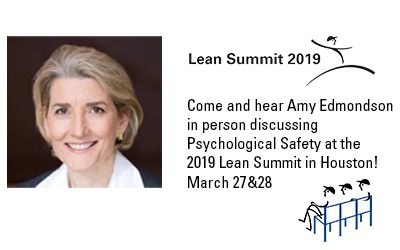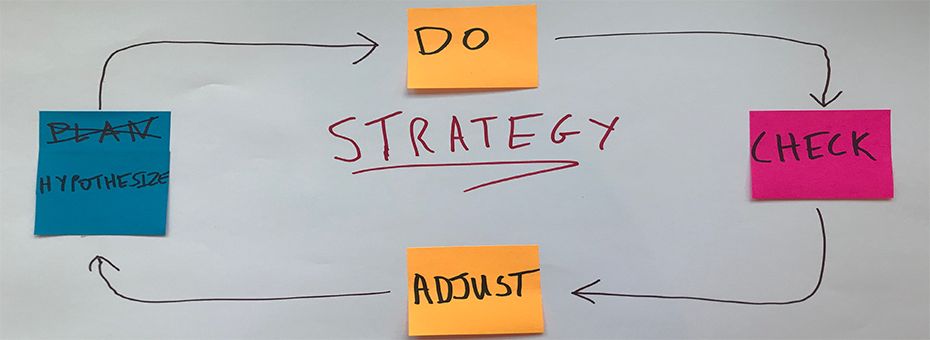In recent years companies such as Volkswagen, Wells Fargo, Nokia, and the New York Federal Reserve have experienced public crises ranging from a failure to comply with environmental regulations to systemic misbehavior caused by top-down pressure.
Each of these well-known cases serve as vivid examples of organizations that boasted deep reservoirs of expertise, driven, intelligent leaders, and clearly articulated goals. None lacked capable employees in any of the relevant fields required for the organization to succeed in its industry. In short, they had the talent.
What they lacked however was the leadership needed to ensure that a climate of psychological safety permeated the workplace, allowing people to speak truth to power inside the company – and, in the case of the Fed, to their industry partners. In my new book, The Fearless Organization, I argue that these kinds of large-scale business failures are in fact preventable.
None of these failures occurred overnight or out of the blue. Quite the opposite. The seeds of failure were taking root for months or years while senior management remained blissfully unaware. In many organizations, countless small problems routinely occur, presenting early warning signs that the company’s strategy may be falling short and needs to be revisited. Yet these signals are often squandered. Preventing avoidable failure thus starts with encouraging people throughout a company to push back, share data, and actively report on what is really happening, whether in the lab or in the market, so as to create a continuous loop of learning and agile execution.
Each of the stories cited above can be seen as a case of strategic failure. What started as small gaps in execution spiraled into dramatic, headline-making failures when new information created by actual experience – whether of engineers or salespeople – was not captured and put to good use in rethinking and redirecting company efforts. For instance, Wells Fargo’s cross-selling strategy bumped up against customers’ real spending power, planting a seed of strategic failure. But what cemented the failure was the salespeople’s belief that senior managers would not tolerate missed targets. That they found it easier to fabricate false accounts than to report what they were learning in the field is as powerful an indication of low psychological safety as you can find.
In focusing on psychological safety, I do not mean to dismiss the ethical dimensions of any of these cases. Wells Fargo, for instance. Yet to view the customer-accounts fraud as the result of individually-corrupt salespeople does not square with the widespread nature of the behavior in the company, which points to a system set up to fail. Set up to fail by the pernicious combination of a top-down strategy and insufficient psychological safety to encourage sharing bad news up the hierarchy.
A similar point can be made about the VW and Fed cases. Any explanation that looks only for a corrupt or foolish individual or individuals will be incomplete, given the complex dynamics at play. What is interesting to consider, however, is the extent to which having information about shortcomings come to light earlier rather than later can nearly always mitigate the size and impact of failures and sometimes prevent them altogether.
Adopting an Agile Approach to Strategy
Taken together, these four cases suggest the necessity of adopting alternate perspectives on strategy that are more in tune with the nature of value creation in today’s VUCA (an acronym for volatility, uncertainty, complexity, and ambiguity) world. Solvay Business School Professor Paul Verdin and I developed a perspective that frames an organization’s strategy as a hypothesis rather than a plan. Like all hypotheses, it starts with situation assessment and analysis – strategy’s classic tools. Also, like all hypotheses, it must be tested through action.
When strategy is seen as a hypothesis to be continually tested, encounters with customers provide valuable data of ongoing interest to senior executives. Imagine if Wells Fargo had adopted an agile approach to strategy: the company’s top management would then have taken repeated instances of missed targets or false accounts as useful data to help it assess the efficacy of the original cross-selling strategy. This learning would then have triggered much-needed strategic adaptation.
Sometimes, poor performance is simply poor performance. People underperforming. Not trying hard enough. Sometimes, companies do in fact need to find ways to better motivate and manage employees to help them reach desired performance standards. However, in a VUCA world, this is not the only explanation for missing a desired target; it is not even the most likely explanation. Early signs of gaps between results and plans must be viewed first as data – triggering analysis – before concluding that the gaps are clear and obvious evidence of employee underperformance.
Cheating and covering up are natural by-products of a top-down culture that does not accept “no” or “it can’t be done” for an answer. But combining this culture with a belief that a brilliant strategy formulated in the past will hold indefinitely into the future becomes a certain recipe for failure. At both VW and Wells Fargo, signs that corners were being cut were repeatedly ignored. Thus, the illusion that the top-down strategies were working persisted – for a while. Particularly poignant is that disconfirming data were available for a surprisingly long time, but they were not put to good use.
Success in a VUCA world requires senior executives to engage thoughtfully and frequently with company operations across all levels and departments. The people on the front line who create and deliver products and services are privy to the most important strategic data the company has available. They know what customers want, what competitors are doing, and what the latest technology allows. Organizational learning – championed by company leaders but enacted by everyone – requires actively seeking deviations that challenge the assumptions underpinning a current strategy. Then, of course, these deviations must be welcomed because of their informative value for adapting the original strategy. Ironically, pushing harder on “execution” in response to early signals of underperformance may only aggravate the problem if shortcomings reveal that prior market intelligence or assumptions about the business model were flawed.
As unfortunate as these business failures may have been, in many ways they pale in comparison to the human costs of low psychological safety that often plague leading organizations. A few recommendations on ways to avoid these situations.
In terms of personal behavior, it should be noted that leaders who welcome only good news create fear that blocks them from hearing the truth. This can lead to many managers who confuse setting high standards with good management. This can contribute to alack of psychological safety which can create an illusion of success that eventually turns into serious business failures. And so, early information about shortcomings can nearly always mitigate the size and impact of future, large-scale failure.
And on a broader view about this is tied to how leaders and managers frame their thoughts on strategy. As Paul Verdin and I argue:
“Closing the gap between strategy and execution may not be about better execution after all, but rather about better learning — about more dialogue between strategy and operations, a greater flow of information from customers to executives, and more experiments. In today’s fast-paced world, strategy as learning must go hand in hand with execution as learning — bypassing the idea that either a strategy or the execution is flawed — to recognize that both are necessarily flawed and both are valuable sources of learning, improvement, and reinvention.”






